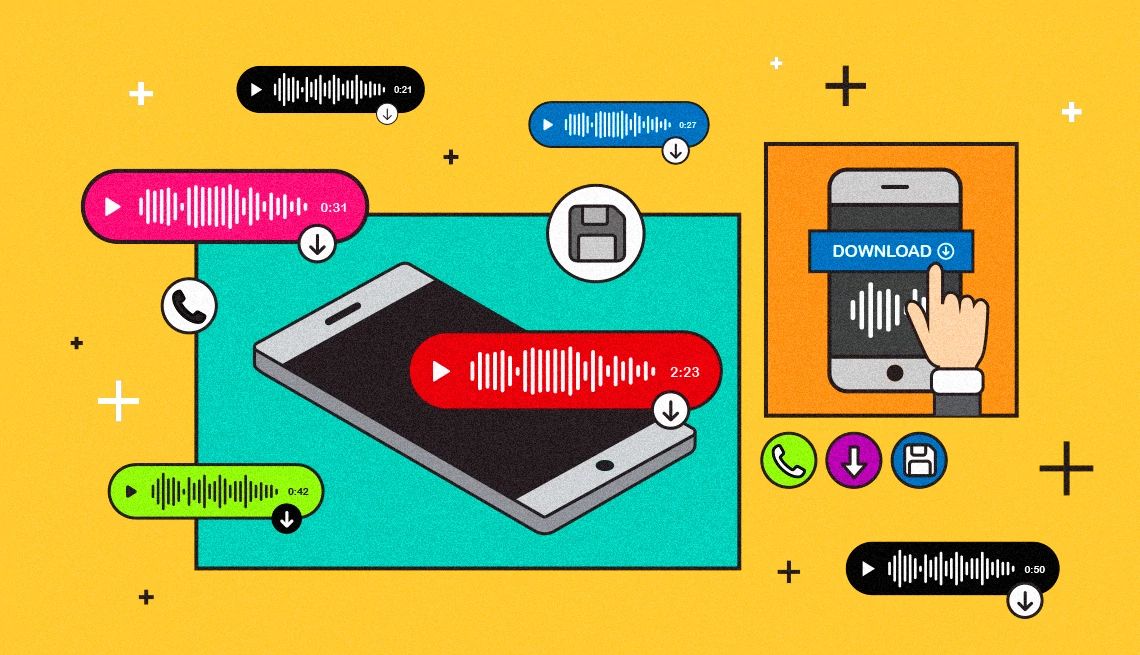AARP Hearing Center


Many of us have treasured voicemails that we keep in our inboxes.
A loved one said something sentimental. A friend made a funny remark. A kid shared something oh-so-cute.
But if you want to hang on to that recording for posterity, you should save it elsewhere. Depending on your cellphone provider, voicemails on smartphones may get deleted after 14 or 30 days or after a certain number — it could be 20 or 40 — have accumulated. And what’s worse: Deleted voicemails, unlike your inadvertently trashed smartphone photos, usually can’t be recovered.
“It’s important to be caring for these things because they’re part of who you are,” says Mary Kate Kwasnik, an associate preservation specialist for the Northeast Document Conservation Center in Andover, Massachusetts. “They’re the footprint that you’re leaving on Earth for your family in a time when we’re not writing as many letters.”
Because the deletion process is automated, your cellphone company can't discern the difference between the scratchy computer-generated pitch of a spammer’s artificial intelligence bot and your father’s last voicemail.
So if you want to save a recording for you and your family, the good news is iPhone and Android smartphone users need to take only a few simple steps:
1. Open your voicemail app, then select the message you’d like to save. Click on the icon to expand your options.
On an iPhone, this icon will look like a white square with an arrow coming out of the top. On an Android, the icon is a vertical ellipsis ⋮ or a less-than symbol < with three dots, one on each end of the lines.
2. Choose from the menu where you want to export the file. With a tap or two, you can send it to a nearby computer, save it to your phone in the files app or the voice memo or recorder app, or upload it to a cloud drive.
Another easy option is to email the voice recording as an attachment to yourself. Then you can open the email on another device, such as your home computer, and download the recording to its hard drive, an external drive or the cloud.
Kwasnik recommends saving the message in multiple places.
“We talk about it as the 3-2-1 rule for digital preservation,” she says. “The rule is to have three copies of your files on two different types of storage media, and one of those storage media you want to be somewhere geographically different.”
That way, if a storage device is damaged or destroyed, you have a backup. For example, you might save the recording to your computer hard drive or an external thumb drive but also save it to a cloud-based account, which uses remote servers, or send a copy to a friend or relative.
One more tip: For someone who does not have a smartphone — maybe you have a flip phone instead — an easy way to save a voicemail is by playing it aloud and recording it into a different device, Kwasnik says. Use a digital voice recorder, a computer or someone else’s smartphone to record it as it plays.

































































More From AARP
What Is a Digital Vault, and Do I Need One?
Store important documents securely in the cloud. Share as necessary
Ancestry Travel: Take a Trip to Find Your Family
Meet four people who explored their roots and discovered unknown relativesDigitize Photos to Protect Family Memories
Secure your memories with digital backups